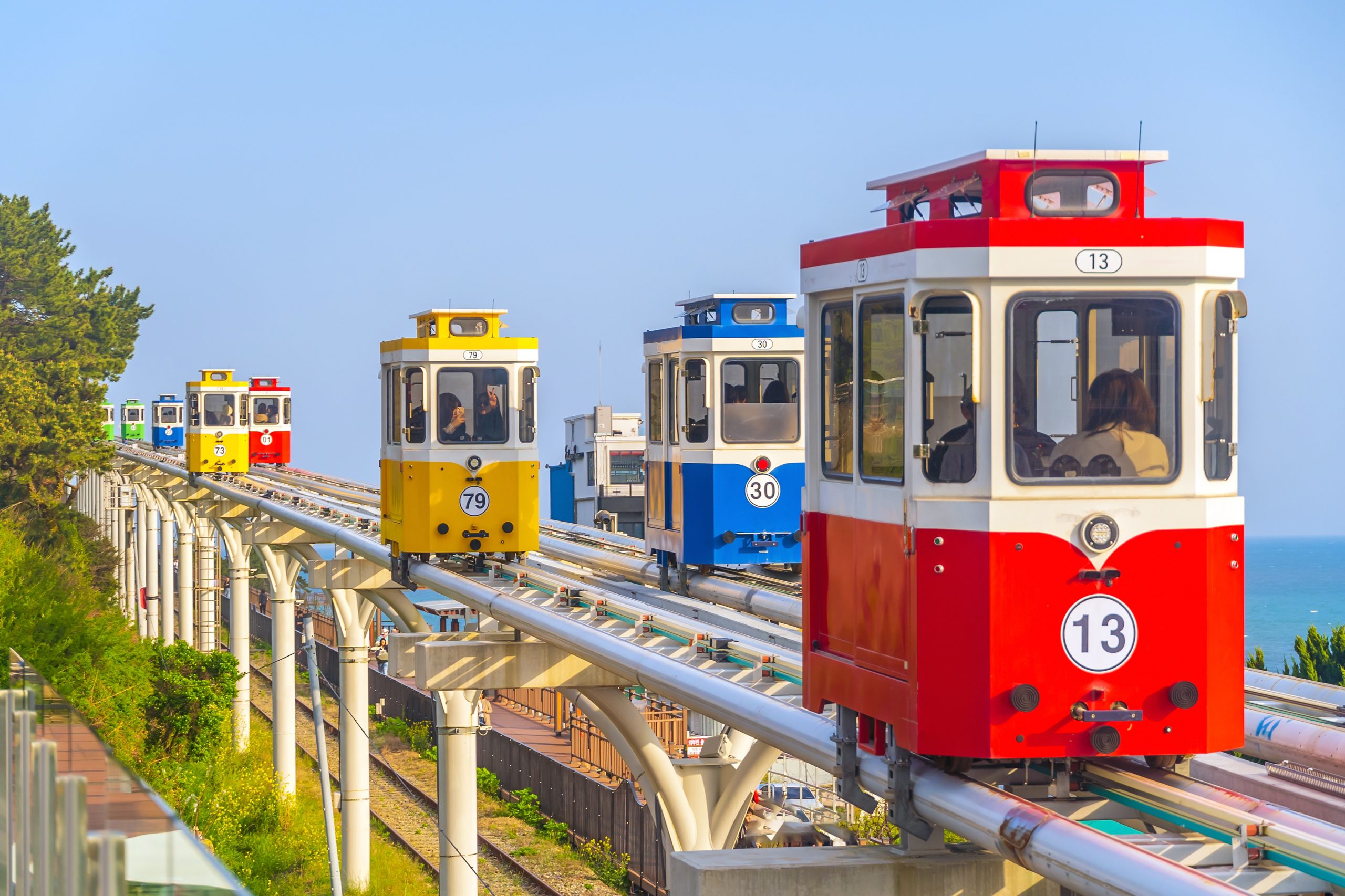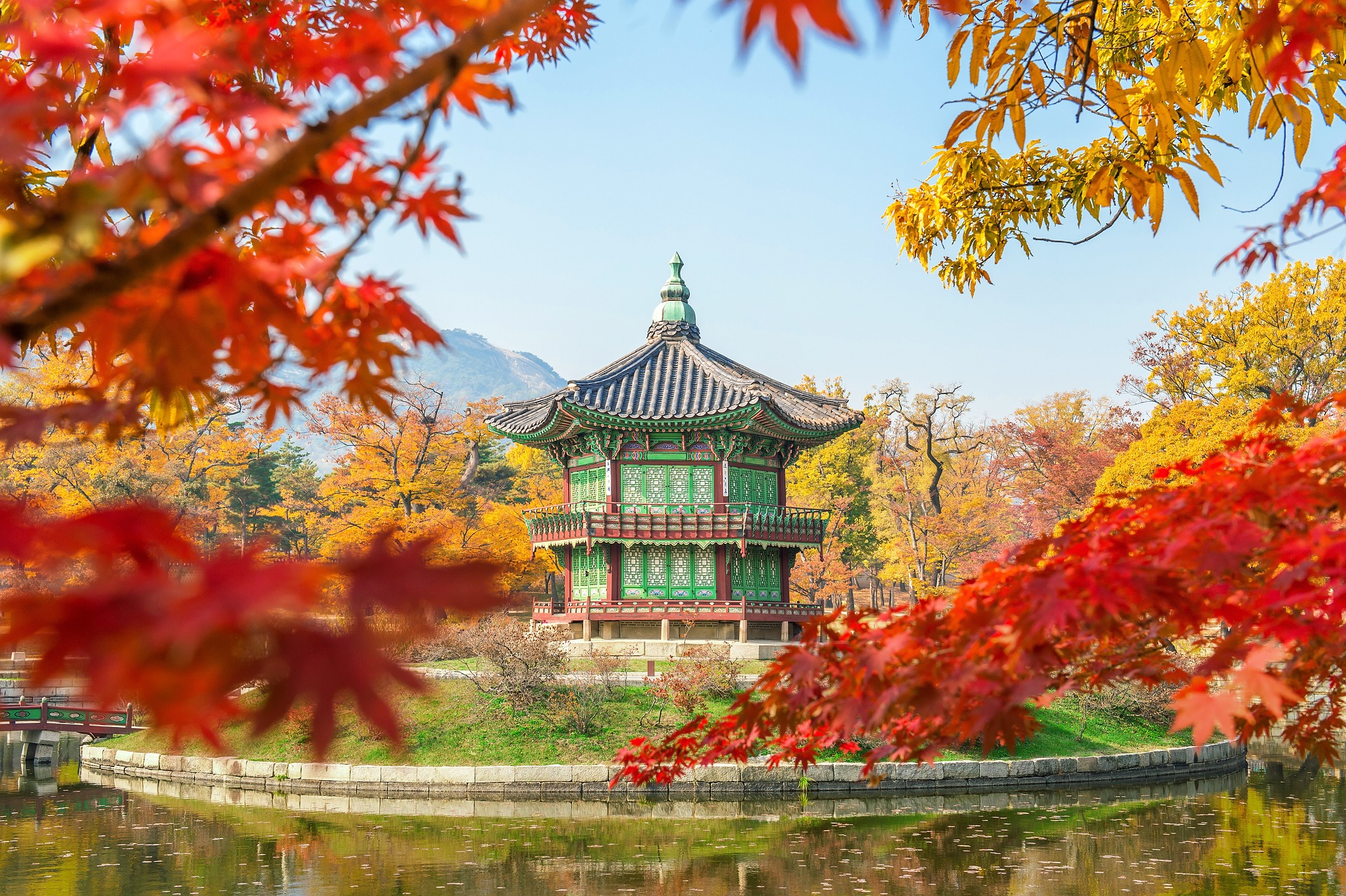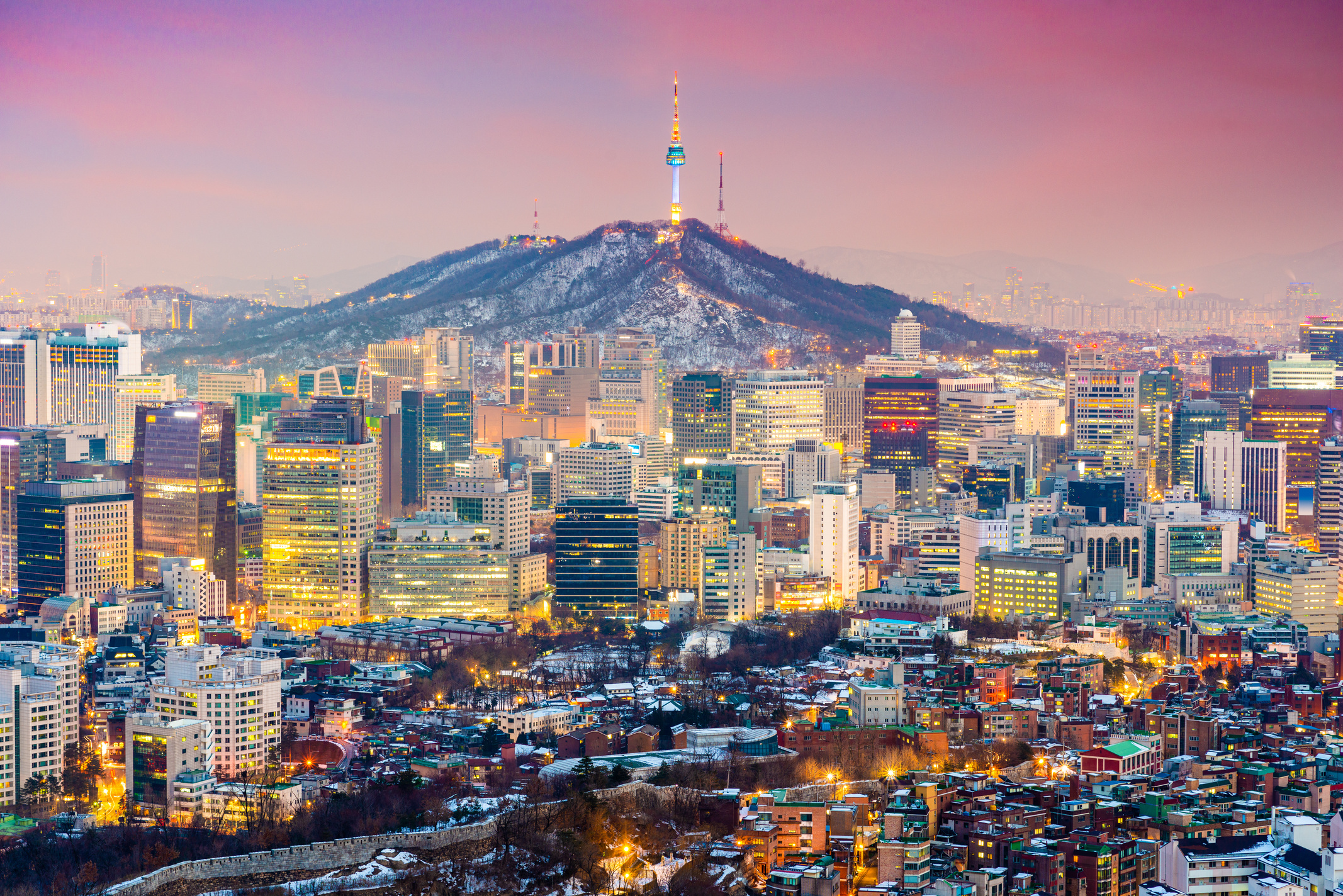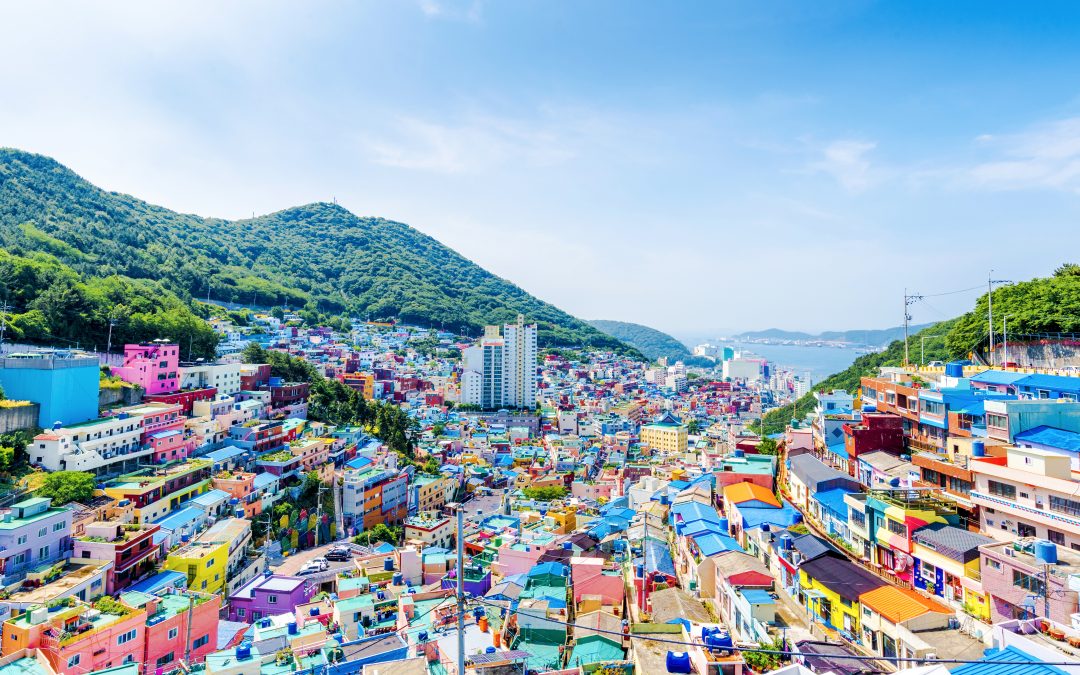Korea has always been a land of contrasts — where centuries-old palaces rise among glass towers, where quiet temples nestle in pine-covered mountains, and where the scent of street food mingles with the sound of K-pop.
As the world rediscovers travel, Korea is emerging as one of Asia’s most captivating destinations — blending innovation, tradition, and natural beauty in a way that few places can.
From the buzzing streets of Seoul to the windswept cliffs of Jeju Island, here are 50 must-visit places in Korea for 2025 and 2026 — each one a reason to fall in love with the country all over again.
Seoul: The Beating Heart of Korea
- Gyeongbokgung Palace
No trip to Korea is complete without standing before the grand gates of Gyeongbokgung, the largest of Seoul’s Five Grand Palaces. Time your visit for the royal guard changing ceremony — a vivid reminder of Korea’s regal past.
- Bukchon Hanok Village
Wander between wooden eaves and stone walls in this neighborhood of preserved hanoks. It’s the soul of old Seoul — a living museum where artisans, tea houses, and boutique galleries blend seamlessly with daily life.
- Insadong
A cultural hub lined with traditional craft shops, calligraphy stores, and teahouses. Sip green tea from handmade ceramic cups as you browse art galleries — every lane hides a new discovery.
- N Seoul Tower (Namsan)
Whether you hike up Namsan or take the cable car, the view from Seoul Tower never disappoints. Go at sunset when the skyline glitters beneath you and the city lights stretch endlessly.
- Dongdaemun Design Plaza (DDP)
Designed by the late Zaha Hadid, DDP is a futuristic marvel — all curves, light, and imagination. It’s where Seoul’s creative pulse beats strongest, with exhibitions, markets, and fashion pop-ups open late into the night.
- Myeongdong Street Market
A paradise for food lovers. Try tteokbokki (spicy rice cakes), hotteok (sweet pancakes), and crispy seaweed rolls while shopping for the latest Korean skincare and street fashion.
- Cheonggyecheon Stream
Flowing quietly through central Seoul, this restored urban stream offers a rare moment of calm amid the city’s energy — especially beautiful when lit up in the evenings.
- Hongdae & Yeonnam-dong
Home to indie music, quirky cafés, and youth culture, Hongdae is Seoul’s creative playground. Stroll through Yeonnam-dong’s Gyeongui Line Forest Park for its café-lined walking paths.
Gyeonggi Province: Nature and Culture Close to the City
- Suwon Hwaseong Fortress
A UNESCO World Heritage Site and a masterpiece of 18th-century military architecture, this fortress wraps around Suwon with its grand gates, watchtowers, and scenic walls.
- Nami Island
Known worldwide from the drama Winter Sonata, this crescent-shaped island is enchanting year-round — cherry blossoms in spring, golden gingko leaves in autumn, and cozy snow walks in winter.
- Garden of Morning Calm
A poetic name for one of Korea’s most beautiful gardens. It’s a mosaic of color and fragrance across all four seasons — the winter light festival here is pure magic.
- Petite France & Italian Village (Gapyeong)
These whimsical European-themed villages add a touch of fantasy to your trip, complete with colorful facades and live cultural performances.
Gangwon Province: Mountains, Coastlines, and Fresh Air
- Seoraksan National Park
Korea’s most famous mountain park is a hiker’s dream — dramatic peaks, waterfalls, and tranquil temples. The Ulsanbawi Rock trail offers unforgettable panoramic views.
- Sokcho & Naksan Temple
Sokcho is the gateway to Seoraksan, known for its seafood markets and beaches. Nearby Naksan Temple overlooks the East Sea, offering serenity with a sea breeze.
- Gangneung & Gyeongpo Lake
A perfect blend of beach and culture — visit Ojukheon House, home of the scholar Yulgok, and enjoy Gangneung’s thriving café scene overlooking the ocean.
- Jeongdongjin Beach
Famous for its sunrise views, Jeongdongjin is where the sea seems to meet the rails — a poetic place to start or end a Korean journey.
Gyeongsang Region: Heritage and Heart
- Gyeongju
Often called “the museum without walls,” Gyeongju is a living relic of the Silla Dynasty. Explore Bulguksa Temple and Seokguram Grotto — both UNESCO treasures — and don’t miss Donggung Palace reflected in Wolji Pond at dusk.
- Busan
Korea’s second city combines beach life, art, and spirituality.
- Haeundae Beach and Gwangalli Beach offer vibrant nightlife and ocean views.
- Gamcheon Culture Village, a rainbow of hillside houses, bursts with street art.
- Haedong Yonggungsa Temple, perched on seaside cliffs, is breathtaking at sunrise.
- Tongyeong
A picturesque port city known as “the Naples of Korea,” with island-hopping ferries, seafood markets, and panoramic cable car rides.
- Andong Hahoe Folk Village
A preserved 16th-century village where traditional thatched houses and Confucian rituals live on. The Hahoe Mask Dance Festival each autumn is a cultural highlight.
Jeolla Region: Slow Travel, Culture, and Cuisine
- Jeonju Hanok Village
A timeless blend of tradition and taste. Stay overnight in a hanok guesthouse, sample Jeonju bibimbap — Korea’s most beloved dish — and wander through craft alleys glowing with lanterns.
- Naejangsan National Park
A symphony of color in autumn, Naejangsan is known for its fiery maple leaves and serene temples framed by mountains.
- Damyang Bamboo Forest (Juknokwon)
A peaceful bamboo grove with walking trails, art installations, and green tea cafés. The air itself feels cleaner here.
- Boseong Green Tea Fields
Rolling hills of emerald tea bushes stretch as far as the eye can see. Visit a teahouse for a matcha latte made right from the fields around you.
- Suncheon Bay Wetlands
A haven for migratory birds and golden reed fields — Suncheon’s eco-preserve is among Korea’s most tranquil landscapes. Visit the nearby Naganeupseong Folk Village for a glimpse of traditional life.
Chungcheong Region: Heartland of Harmony
- Gongju & Buyeo
Ancient capitals of the Baekje Kingdom, home to royal tombs, fortress walls, and cultural relics that trace Korea’s early dynastic roots.
- Daecheon Beach (Boryeong)
Best known for the Boryeong Mud Festival, one of Korea’s liveliest summer events. Outside festival season, it’s a lovely coastal escape.
- Daejeon Expo Park & Hanbat Arboretum
A hub for science, innovation, and urban nature. The arboretum is an ideal spot for a quiet walk after exploring the city’s cultural museums.
Jeju Island: Nature’s Masterpiece
- Hallasan National Park
At the heart of Jeju Island rises Hallasan, Korea’s tallest peak. Hike to the crater lake at the summit for surreal views — or explore the wildflower-filled meadows at its base.
- Seongsan Ilchulbong (Sunrise Peak)
Jeju’s most famous landmark, this volcanic tuff cone glows gold at dawn. It’s a short but steep climb to one of the most iconic sunrises in Asia.
- Manjanggul Lava Tube
An underground marvel formed thousands of years ago by flowing lava. Its vast caverns and stone pillars feel like stepping into another world.
- Jeongbang & Cheonjiyeon Waterfalls
Twin cascades that represent Jeju’s elemental beauty — one flows directly into the sea, the other through a lush forested gorge.
- Seopjikoji & Udo Island
Seopjikoji’s windswept cliffs are cinematic, while nearby Udo Island offers beaches, bike trails, and ocean views that seem painted in pastel.
- Jeju Olle Trails
A network of coastal walking routes that reveal the island’s wild, authentic side — from fishing villages to lava rock fields and orchid meadows.
Hidden Treasures & Rising Stars
- Haeinsa Temple (Hapcheon)
Home to the Tripitaka Koreana — 80,000 wooden printing blocks of Buddhist scriptures — this UNESCO site is a spiritual cornerstone of Korea.
- Jirisan National Park
The country’s largest mountain reserve, dotted with waterfalls, temples, and tea plantations. Ideal for hiking and slow travel.
- Tongdosa Temple (Yangsan)
One of Korea’s three jewel temples, renowned for housing relics of the Buddha himself.
- Yeosu
A romantic seaside city famed for its night sea views, cable car rides, and harborfront dining.
- Gochang Dolmen Park
Home to the world’s largest collection of Bronze Age dolmens — Korea’s own “Stonehenge.”
- Ganghwa Island
Rich in history and nature, from megalithic tombs to seaside fortresses and tidal flats.
- Ulleungdo Island
Remote, pristine, and utterly breathtaking. Known for its sea cliffs, waterfalls, and crystal-clear waters.
- Daegu Seomun Market
A sensory feast of Korean street food and textiles — try tteokgalbi (grilled short rib patties) and local mochi treats.
- Mokpo
A rising cultural port city with maritime museums, modern art galleries, and easy ferry access to the islands.
- Tongyeong Skyline Luge & Cable Car
Adventure meets panorama — perfect for families and thrill-seekers alike.
- Haenam Ttangkkeut Village
The southernmost tip of the Korean Peninsula — where land meets sea in poetic solitude.
- Jecheon Cheongpung Lake
A peaceful inland lake surrounded by cliffs, temples, and scenic cable cars — Korea’s hidden Switzerland.
- Samcheok Hwanseon Cave
One of Asia’s largest limestone caves, adorned with stalactites and underground rivers.
- Andong Woryeonggyo Bridge
A beautiful wooden bridge especially stunning at night when illuminated over the Nakdong River.
- Seoul Forest
A modern urban oasis combining art, nature, and sustainability — Seoul’s answer to Central Park.
- Starfield Hanam
Asia’s largest shopping complex — a futuristic lifestyle destination blending retail, design, and entertainment.
Final thoughts
Korea’s magic lies in its variety — where a mountain temple might stand just hours away from a neon-lit beach city, and where centuries of history pulse beneath layers of innovation.
Whether you’re drawn by ancient palaces, steaming hot springs, coastal hikes, or the latest café trends, 2025 and 2026 are the years to experience Korea at its most dynamic.
With world-class infrastructure, a thriving culinary scene, and a growing global spotlight, this is the perfect time to discover (or rediscover) the Land of Morning Calm.




Call Us
+1 877 666 3113
Email Us
letsgo@uat.skyvacations.net

